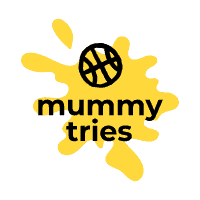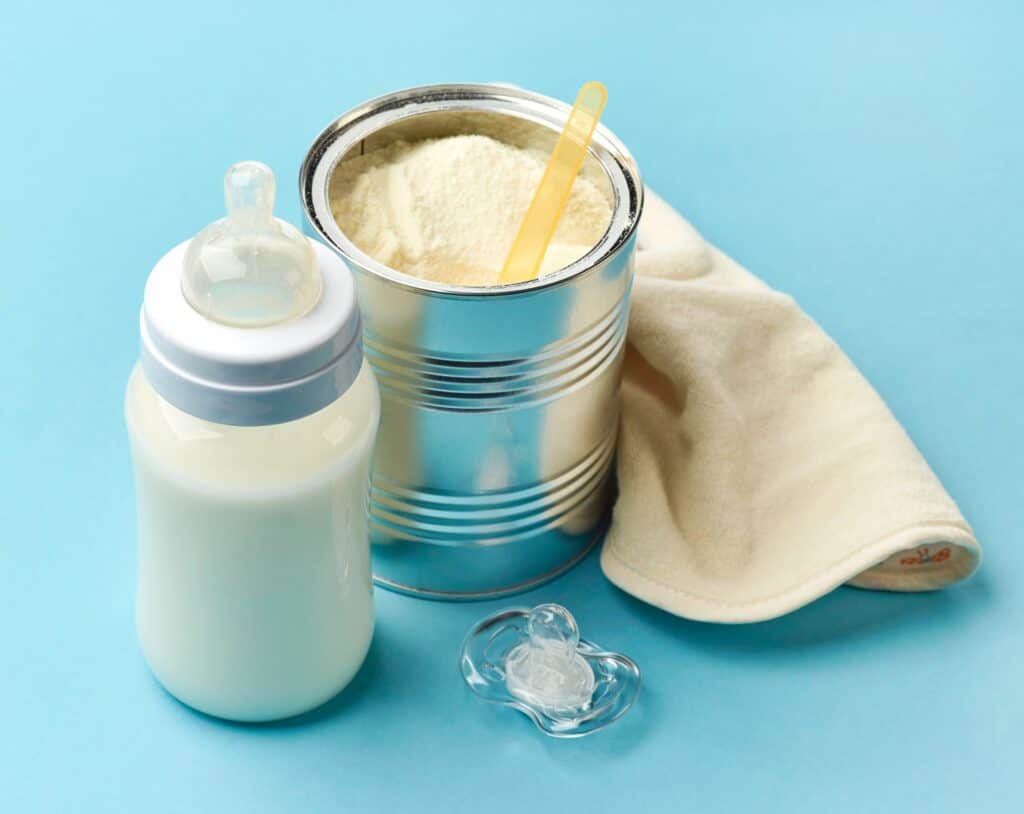Infant formula is a vital source of nutrition for babies who are not being breastfed. While breastfeeding is recommended as the best source of nutrition for infants, formula can be a great alternative for mothers who are unable to breastfeed or choose not to. One question that parents often ask is how many cans of formula per month are needed to feed their baby.
The answer to this question depends on several factors, including the baby’s age, weight, feeding practices, and the type of formula being used. For example, a newborn typically needs to be fed every two to three hours, while an older baby may only need to be fed every four to six hours. Additionally, the amount of formula needed per feeding will vary depending on the baby’s weight and age.
Determining how many cans of formula per month are needed can be a challenge, but it is an important one for parents to figure out. By understanding the factors that contribute to formula needs and estimating monthly consumption, parents can ensure that they have enough formula on hand to meet their baby’s needs.
Understanding Infant Formula
Infant formula is a specially designed milk substitute that is used to feed babies who are not breastfed or who need additional supplementation. It is a complex mixture of ingredients that is formulated to provide all the necessary nutrients for a baby’s growth and development.
Types of Formula
There are several types of infant formula available in the market. The most common types are powdered formula, liquid formula, and ready-to-use formula. Powdered formula is the most economical and convenient type of formula. It is available in cans and is mixed with water to make the formula. Liquid formula is a pre-mixed formula that is available in bottles or cans. It is more expensive than powdered formula but is more convenient to use. Ready-to-use formula is the most expensive type of formula and is available in pre-filled bottles or cans. It is the most convenient type of formula and requires no preparation.
Formula Components
Infant formula is made up of several components, including protein, carbohydrates, fats, vitamins, and minerals. The protein in infant formula can come from cow’s milk, soymilk, or hydrolyzed protein. Carbohydrates in infant formula come from lactose or other sugars. Fats in infant formula are usually derived from vegetable oil. Vitamins and minerals are added to infant formula to ensure that it meets the nutritional requirements of babies.
The brand and type of formula chosen by parents depend on various factors, including the baby’s age, health, and feeding preferences. It is important to choose a formula that is appropriate for the baby’s age and development. Parents should consult with a pediatrician or a healthcare professional before choosing a formula for their baby.
In summary, infant formula is a complex mixture of ingredients that is designed to provide all the necessary nutrients for a baby’s growth and development. There are several types of infant formula available, including powdered formula, liquid formula, and ready-to-use formula. The components of infant formula include protein, carbohydrates, fats, vitamins, and minerals. Parents should consult with a pediatrician or a healthcare professional before choosing a formula for their baby.
Determining Formula Needs
When it comes to feeding infants, it is essential to ensure that they are getting enough formula to support their growth and development. Determining the right amount of formula can depend on several factors, including age, growth, and feeding schedule. In this section, we will discuss how to calculate the appropriate amount of formula for formula-fed babies.
By Age and Growth
Newborns will usually need to eat every two to three hours and will consume anywhere from 1 to 3 ounces of formula per feeding. As they grow, they will require more formula and less frequent feedings. According to 1happykiddo.com, a baby between 2-4 months of age will need about 4-5 cans per month of 35 oz can. This amount may vary depending on the type of formula, the baby’s growth, and how much milk the baby drinks per feeding.
It is also important to note that babies may go through growth spurts, during which they will require more formula than usual. During these periods, parents should be prepared to adjust the baby’s feeding schedule and formula intake accordingly.
Calculating Quantity
To calculate the appropriate amount of formula, parents can use a simple formula. According to momtivational.com, a baby between 0 and 2 months old will need around 14 cans of formula, if they aren’t breastfeeding. This amount may vary depending on the baby’s weight, age, and feeding schedule.
One way to calculate the amount of formula needed is to multiply the baby’s weight in pounds by 2.5. For example, if a baby weighs 8 pounds, they will require approximately 20 ounces of formula per day (8 x 2.5 = 20). This amount can be divided into several feedings throughout the day, with each feeding consisting of approximately 2 to 4 ounces of formula.
Parents can also use a formula calculator, such as the WIC Infant Formula Tailoring Calculator, to determine the appropriate amount of formula for their baby. This calculator takes into account the baby’s age, weight, and feeding schedule to provide an accurate estimate of the amount of formula needed.
In summary, determining the appropriate amount of formula for a formula-fed baby can depend on several factors, including age, growth, and feeding schedule. Parents can use a simple formula or calculator to determine the appropriate amount of formula and adjust it as needed to ensure that their baby is getting the nutrition they need to grow and thrive.
Feeding Practices
When it comes to feeding a baby, there are two main approaches: scheduled and on-demand feeding. Scheduled feeding involves feeding the baby at set times throughout the day, while on-demand feeding involves feeding the baby whenever they show signs of hunger. Both approaches have their advantages and disadvantages, and the choice between them ultimately depends on the preferences of the parents and the needs of the baby.
Scheduled vs. On-Demand Feeding
Scheduled feeding can be helpful for parents who want to establish a routine for their baby and have more control over their feeding schedule. It can also be helpful for babies who have trouble sleeping or have medical conditions that require them to eat at regular intervals. However, scheduled feeding can also be inflexible and may not meet the needs of babies who have unpredictable hunger patterns.
On-demand feeding, on the other hand, allows babies to eat when they are hungry and can help establish a closer bond between the baby and the parent. It can also help ensure that the baby gets enough to eat and can be more flexible to accommodate the baby’s changing needs. However, on-demand feeding can be challenging for parents who prefer a more structured routine, and it can be difficult to determine how much the baby is eating.
Transitioning to Solid Foods
As babies grow and develop, they will eventually start to transition from a diet of breast milk or formula to solid foods. This process, known as weaning, can be challenging for both the baby and the parent. It is important to introduce solid foods gradually and to pay attention to the baby’s cues to ensure that they are ready for the transition.
When it comes to introducing solid foods, it is important to start with simple, easy-to-digest foods such as rice cereal or pureed fruits and vegetables. Parents should also pay attention to the baby’s reactions to new foods and introduce them one at a time to identify any potential allergies or sensitivities.
In summary, feeding practices play a critical role in the development and well-being of a baby. Whether parents choose to feed their baby on a schedule or on-demand, it is important to pay attention to the baby’s cues and adjust the feeding schedule as needed. As babies transition to solid foods, it is important to introduce new foods gradually and pay attention to the baby’s reactions to ensure a smooth and successful transition.
Formula Preparation and Storage
Formula preparation and storage are critical components of infant feeding. It is essential to ensure that the formula is mixed and handled correctly and stored safely to avoid any health risks to the infant.
Mixing and Handling
The first step in formula preparation is to ensure that all equipment, including bottles, nipples, and measuring cups, is sterilized. It is recommended to use clean, boiled water to prepare the formula. The water should be heated to at least 158°F (70°C) to kill any bacteria that may be present.
When mixing powdered formula, it is important to follow the manufacturer’s instructions carefully. The correct amount of water and powder should be measured using the provided scoop and mixed thoroughly. It is important not to add more or less water than recommended, as this can affect the nutritional content of the formula.
Shelf Life and Safety
Once the formula is prepared, it should be used immediately or stored in the refrigerator for up to 24 hours. Prepared formula should never be left at room temperature for more than two hours, as this can lead to bacterial growth and increase the risk of illness.
It is important to check the expiration date on the formula can before use. An unopened can of formula can last up to a year, while an opened can should be used within a month. Ready-to-use formula can be stored at room temperature until opened, but should be refrigerated after opening and used within 48 hours.
In summary, formula preparation and storage are essential components of infant feeding. It is important to follow the manufacturer’s instructions carefully when mixing powdered formula and to sterilize all equipment before use. Prepared formula should be used immediately or stored in the refrigerator for up to 24 hours, and the expiration date on the can should be checked before use.
Estimating Monthly Consumption
When it comes to feeding a baby, it’s important to ensure that they are getting enough formula to meet their nutritional needs. One of the key factors to consider is how many cans of formula per month will be required to keep up with their appetite.
To estimate monthly consumption, there are a few factors to consider. Firstly, the quantity of formula needed per feeding will depend on the age and weight of the baby. For example, a newborn may only require 2-3 ounces per feeding, while an older baby may need up to 8 ounces.
Next, the number of feedings per day will also impact the total amount of formula needed. For instance, a baby who feeds every 2-3 hours will require more formula than one who only feeds every 4-5 hours.
Once you have an idea of the amount per feeding and the number of feedings per day, you can calculate the total amount of formula required per day. From there, it’s easy to estimate the number of cans required per month. For example, if a baby needs 30 ounces of formula per day, and each can contains 32 ounces, they will require approximately 28 cans per month [1].
It’s important to note that the number of cans required may vary depending on the market and the type of formula being used. Some formulas may come in bulk-sized containers, which may be more cost-effective than buying individual cans. Additionally, some formulas may be more concentrated than others, which could impact the number of cans required.
In summary, estimating monthly consumption of formula requires consideration of the amount per feeding, the number of feedings per day, and the type of formula being used. By taking these factors into account, parents can ensure that they have enough formula on hand to meet their baby’s needs.
References:
[1] The Tech Edvocate. How Many Cans of Formula Per Month Calculator. Retrieved from https://www.thetechedvocate.org/how-many-cans-of-formula-per-month-calculator/
Frequently Asked Questions
What is the average monthly consumption of formula for a newborn?
The average monthly consumption of formula for a newborn varies depending on the baby’s age, frequency of feedings, and amount of milk consumed at each feeding. According to Revive Baby, the total number of cans of formula required each month can range from 2 to 10 cans, with an average of 5 cans.
How can I calculate the amount of formula my baby will need each month?
To calculate the amount of formula your baby will need each month, you need to know the amount of formula needed per feeding and how frequently your baby feeds in a day. According to 1 Happy Kiddo, the number of cans of formula per month can be calculated by dividing the ounces of formula consumed per day by the number of ounces in a can of formula.
What are the cost implications of formula feeding per month?
The cost of formula feeding per month depends on the brand of formula used, the number of cans consumed per month, and the price of each can. According to Parental Questions, the cost of formula feeding per month can range from $50 to $150, with an average cost of $100.
How frequently should I expect to purchase formula for my baby?
The frequency of purchasing formula for your baby depends on the number of cans consumed per month and the size of each can. On average, a can of formula can last anywhere from 3 to 7 days, depending on the feeding schedule and the amount of formula consumed at each feeding.
What is the typical duration a single can of formula lasts?
The typical duration a single can of formula lasts varies depending on the feeding schedule and the amount of formula consumed at each feeding. According to CDC, a can of formula can last anywhere from 3 to 7 days, depending on the size of the can and the amount of formula consumed at each feeding.
How many ounces of formula does an average can produce?
The number of ounces of formula an average can produces depends on the size of the can and the brand of formula used. On average, a can of formula produces 20 to 30 ounces of formula.

My name is Laura, and as a mother of two, I understand firsthand the joys and challenges of raising a child. That’s why I created this website, to provide a comprehensive and trustworthy source of information and support for new and expectant parents.








